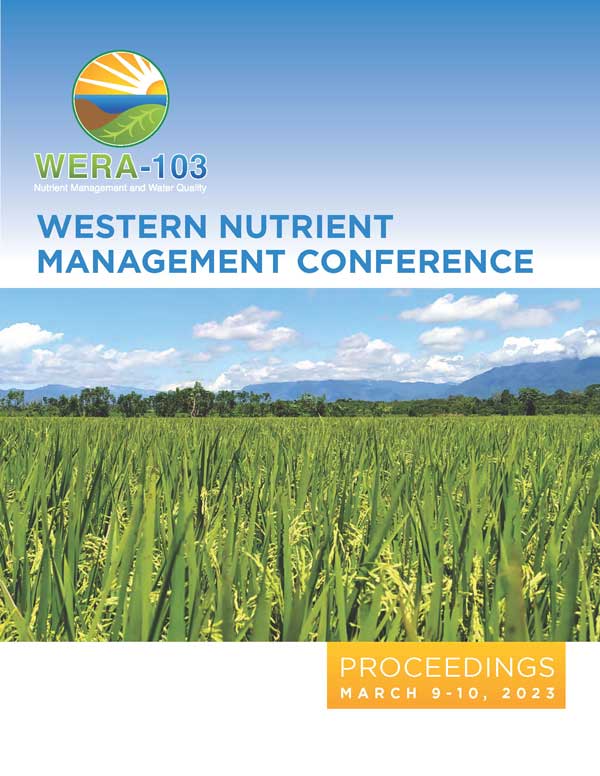Download the Conference Proceedings
Proceedings
Authors
| Filter results5 paper(s) found. |
|---|
1. Residue Decomposition of Surface and Incorporated Barley, Corn, and Wheat at Varying Fertilizer-N RatesCereal crops are commonly grown in southern Idaho and most parts of the western United States. These cereal crops are routinely harvested for their grain with the remaining plant material (chaff, stems, leaves, etc.) left in the field to decompose prior to planting of following spring crops. Understanding the effects of post-harvest residue management on barley (Hordeum vulgare L.), corn (Zea mays L.), and wheat (Tritcum aestivum L.) residue is important for optimizing... C. Rogers, G. Thurgood, B. Dari, J. Marshall, O.S. Walsh, K. Schroeder, G. Loomis |
2. Determining Lime Requirements for Idaho SoilsFor the past 25 years, northern Idaho soils have significantly shown a decline in soil pH, from pH 6.0 to around a pH of 5.6. Southern Idaho soils are mostly neutral to alkaline, with a pH of around 7.0 to 8.5, however, most agricultural soils pH is declining to pH < 4.5. Soil acidification is becoming a rising issue in soil sustainability, in which approximately 30% of the world surface is covered by acidic soils. Low soil solution pH can be induced by continued irrigation that increases... K.L. Mookodi, J. Spackman, J. Sagers, K. Schroeder |
3. Response of Soil N Cycling, Nitrifying Organisms, and Winter Wheat Yield and Quality to Nitrification Inhibitors in High Rainfall Zones of Northern IdahoLeaching of fertilizer nitrogen contributes to environmental pollution and is an economic loss for agricultural producers. Leaching of inorganic nitrogen fertilizers is intensified when applied to areas of high rainfall zones in excess of crop requirements. Reduction of this nitrogen loss may be achieved through the application of nitrification inhibitors at the time of planting to prevent the transformation of ammonia to more leachable nitrate by nitrifying organisms. Much research on nitrification... S. Philpott, H. Tao, K. Schroeder |
4. Lime Incubation for Southern Idaho SoilsSoil acidity is a growing concern for agricultural productivity in Idaho, particularly in the eastern and northern regions where soils are trending acidic. Soil acidity below a pH 5.5 adversely affects the root development and nutrient uptake of crops like alfalfa, barley, and wheat. This study aims to determine the lime requirements for acidic soils in Idaho to optimize crop growth, specifically targeting pH levels of 5.5, 6.0, 6.5, and 7.0. Soil samples were collected from various grower fields... K. Young, J. Spackman, T. Jacobsen, J. Sagers, J. Hatch, R. Ritchie, J. Williams, K. Schroeder, A. Adjesiwor |
5. Liming for Improved Nutrient Utilization and Weed Management in WheatSoil acidification is an increasing concern for agricultural productivity in Eastern Idaho, where low soil pH threatens the yield and quality of key crops such as barley and spring wheat. Acidification occurs from the long-term application of ammonium-based fertilizers and other management practices, leading to aluminum toxicity and nutrient imbalances that inhibit root development and reduce yields. Farmers in the region are exploring strategies to address this challenge, including the use of... T. Jacobsen, J. Spackman, A. Adjesiwor, J. Sagers, K. Schroeder, J. Bevan, K. Mookodi, J. Gibbons |
